The Battle of the citadel of Vicenza was fought between November 26 and 29, 1509 in Vicenza, Italy as an episode of the War of the League of Cambrai.
In May 1509, after the after the defeat suffered in the Battle of Agnadello, the Venetian army seemed destined to fall with the Republic of Venice. During the summer, the League of Cambrai's armies, the Holy Roman Empire, Kingdom of France, Marquisate of Mantua, Papal States, and Duchy of Ferrara's ones invaded Veneto.
However, Serenissima resisted and in October, after the defeat in the Siege of Padua, the French Army's Marshal Jacques de la Palice left Veneto, moving to Milan. The Holy Roman Emperor Maximilian I left the battle field, too, moving to Trento.
Due to the Emperor's leaving, the Venetians, during November, took back a large part of Veneto and, on November 26, the inhabitants of Vicenza opened the doors to Andrea Gritti and Venetian Army. However, the imperial garrison located in Vicenza didn't leave the city and, commanded by the Prince of Anhalt Rudolph IV, took place in the fortified citadel. This started a three-day clash between the Venetian Army and the Army of the Holy Roman Empire, won by the first Venetian Army, which took the control over the citadel. [1] [2]

The League of Cambrai was a military coalition against the Republic of Venice formed on December 8, 1508, by the main European powers, to mantain the hegemony on the Italian peninsula.
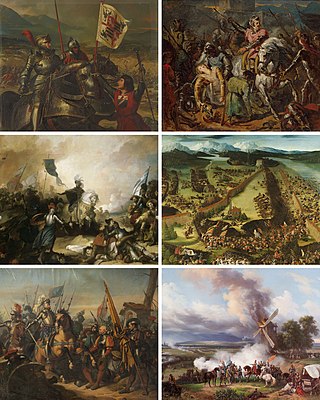
The Italian Wars were a series of conflicts fought between 1494 and 1559, mostly in the Italian Peninsula, but later expanding into Flanders, the Rhineland and Mediterranean Sea. The primary belligerents were the Valois kings of France, and their Habsburg opponents in the Holy Roman Empire and Spain. At different points, various Italian states participated in the war, some on both sides, with limited involvement from England and the Ottoman Empire.

Vittorio Veneto is a city and comune situated in the Province of Treviso, in the region of Veneto, Italy, in the northeast of Italy, between the Piave and the Livenza rivers, borders with the following municipalities:
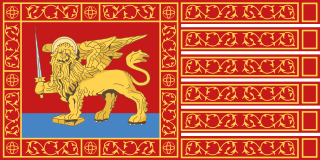
The Republic of Venice or Venetian Republic, traditionally known as La Serenissima, was a sovereign state and maritime republic in parts of the present-day Italian Republic that existed for 1,100 years from 697 until 1797. Centered on the lagoon communities of the prosperous city of Venice, it incorporated numerous overseas possessions in modern Croatia, Slovenia, Montenegro, Greece, Albania and Cyprus. The republic grew into a trading power during the Middle Ages and strengthened this position during the Renaissance. Most citizens spoke the Venetian language, although publishing in Italian became the norm during the Renaissance, alongside Latin and Medieval Greek.

The War of the League of Cambrai, sometimes known as the War of the Holy League and several other names, was fought from February 1508 to December 1516 as part of the Italian Wars of 1494–1559. The main participants of the war, who fought for its entire duration, were France, the Papal States, and the Republic of Venice; they were joined at various times by nearly every significant power in Western Europe, including Spain, the Holy Roman Empire, England, the Duchy of Milan, the Republic of Florence, the Duchy of Ferrara, and the Swiss.

Bartolomeo d'Alviano was an Italian condottiero and captain who distinguished himself in the defence of the Venetian Republic against the Holy Roman Emperor Maximilian.

Leonardo Loredan was a Venetian nobleman and statesman who reigned as the 75th Doge of Venice from 1501 until his death in 1521. As a wartime ruler, he was one of the most important doges in the history of Venice. In the dramatic events of the early 16th century, Loredan's Machiavellian plots and cunning political manoeuvres against the League of Cambrai, the Ottomans, the Mamluks, the Pope, the Republic of Genoa, the Holy Roman Empire, the French, the Egyptians and the Portuguese saved Venice from downfall.

Andrea Gritti was the Doge of the Venetian Republic from 1523 to 1538, following a distinguished diplomatic and military career. He started out as a successful merchant in Constantinople and transitioned into the position of Bailo, a diplomatic role. He was arrested for espionage but was spared execution thanks to his good relationship with the Ottoman vizier. After being freed from imprisonment, he returned to Venice and began his political career. When the War of the League of Cambrai broke out, despite his lack of experience, he was given a leadership role in the Venetian military, where he excelled. After the war, he was elected Doge, and he held that post until his death.

Niccolò di Pitigliano (1442–1510) was an Italian condottiero best known as the Captain-General of the Venetians during the Most Serene Republic's war against the League of Cambrai. He was a member of the powerful feudal family of the Orsini, belonging to its Pitigliano line.
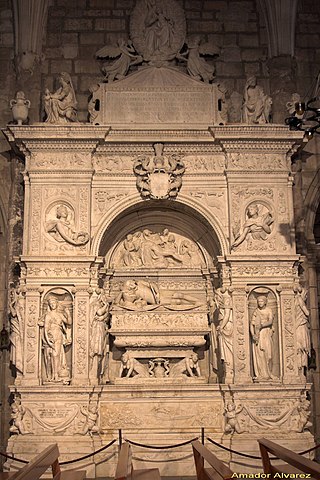
Ramon Folc de Cardona i Anglesola was a Catalan general and politician, who served as the viceroy of Naples during the Italian Wars and commanded the Spanish forces in Italy during the War of the League of Cambrai. He was granted the title count of Oliveto in the Kingdom of Naples, on 12 December 1515.
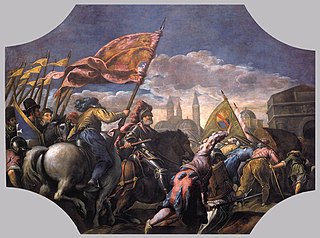
The siege of Padua was a major engagement early in the War of the League of Cambrai.
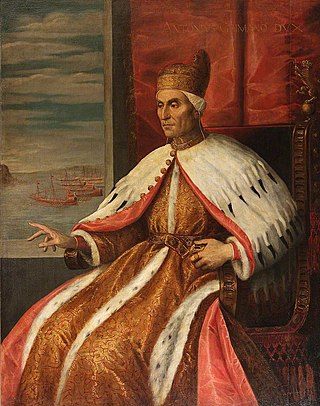
Antonio Grimani was the Doge of Venice from 1521 to 1523. He had previously served as commander of the Venetian Navy.

The battle of Cadore, also known as the battle of Rio Secco or Rusecco, took place near Pieve di Cadore during the opening phase of the War of the League of Cambrai, part of the Italian Wars, on 2 March 1508, opposing the Venetian armies commanded by Bartolomeo d'Alviano and those of the Holy Roman Empire under the leadership of Sixt von Trautson. The battle resulted in a decisive Venetian victory, stopping the Habsburg invasion of Cadore and allowing the Venetians to reconquer all their lost strongholds as well as invade Habsburg-ruled lands in Friuli and the Julian March, besieging Trieste and marching on Istria. This would trigger the creation of the League of Cambrai and the beginning of the War of the League of Cambrai.
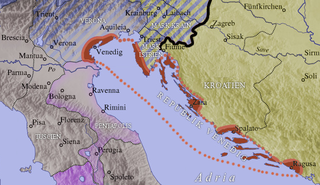
The Republic of Venice was a sovereign state and maritime republic in Northeast Italy, which existed for a millennium between the 8th century and 1797.
This article presents a detailed timeline of the history of the Republic of Venice from its legendary foundation to its collapse under the efforts of Napoleon.
The Battle of Landriano took place on 21 June 1529, between the French army under Francis de Bourbon, Comte de St. Pol and the Imperial–Spanish army commanded by Don Antonio de Leyva, Duke of Terranova in the context of the War of the League of Cognac. The French army was destroyed and the battle's strategic result was that the struggle between Francis I of France and Charles V, Holy Roman Emperor for control of northern Italy was temporarily at an end.

The Battle of La Motta, also known as the Battle of Schio, Battle of Vicenza or Battle of Creazzo, took place at Schio, in the Italian region of Veneto, Republic of Venice, on 7 October 1513, between the forces of the Republic of Venice and a combined force of Spain and the Holy Roman Empire, and was a significant battle of the War of the League of Cambrai. A Venetian army under Bartolomeo d'Alviano was decisively defeated by the Spanish/Imperial army commanded by Ramón de Cardona and Fernando d'Ávalos.
List of events from the year 1509 in France.

The Republic of Venice was dissolved and dismembered by the French general Napoleon Bonaparte and the Habsburg Monarchy on 12 May 1797.















